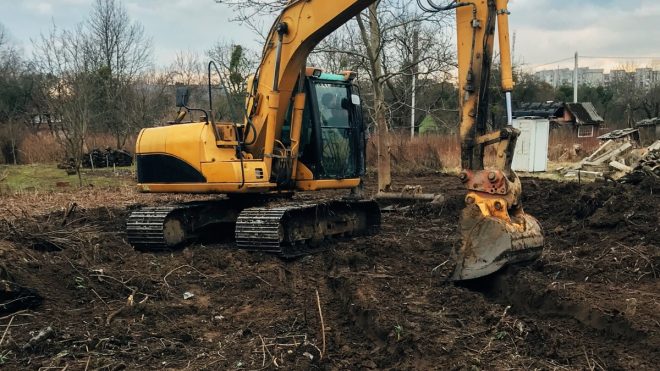As May bursts forth with vibrant blooms and lush greenery, we are often captivated by the picturesque landscapes that surround us. From meticulously manicured gardens to sprawling parks, these beautiful outdoor spaces seem to appear effortlessly. However, behind every stunning May landscape lies a crucial, often unseen, foundation of work: excavation. This essential process, involving the strategic removal and movement of earth, is the unsung hero that prepares the ground for the beauty we admire.
Did you know
That proper excavation is critical for ensuring the long-term health and stability of any landscape project? Incorrect grading, poor drainage preparation, or inadequate soil removal can lead to significant problems down the line, impacting plant growth and the overall longevity of the design.
Laying the Groundwork: Why Excavation is Essential for Landscapes
Excavation is far more than simply digging holes. It’s a precise and calculated process that addresses fundamental aspects of landscape construction:
- Grading and Leveling: Achieving the desired contours and elevations is paramount for both aesthetics and functionality. Excavation allows for the precise grading of land to create level areas for lawns, patios, and structures, as well as gentle slopes for visual appeal and proper drainage.
- Drainage Solutions: One of the most critical, yet often invisible, aspects of landscape excavation is the creation of effective drainage systems. Proper grading and the installation of French drains, swales, and other drainage solutions prevent waterlogging, which can damage plant roots, erode soil, and create unusable areas.
- Foundation Preparation: For any hardscaping elements like patios, walkways, retaining walls, or even water features, proper excavation is essential for preparing a stable and level foundation. This ensures the longevity and structural integrity of these features.
- Soil Removal and Amendment: Often, the existing soil may be unsuitable for the desired plants. Excavation allows for the removal of poor-quality soil and the introduction of amended soil rich in nutrients, creating the ideal growing medium for healthy and vibrant vegetation.
- Creating Planting Beds and Features: Excavation is the first step in shaping planting beds, digging holes for trees and shrubs, and creating features like ponds or rock gardens. The depth and dimensions of these excavations are crucial for plant health and the overall design.
- Utility Installation: Before the final landscaping takes shape, excavation is often required for the installation of underground utilities such as irrigation systems, electrical lines for outdoor lighting, and plumbing for water features.
Contact RFC Excavating and Landscape Construction at (973) 304-0500 for more details!
The Precision of Earthwork: Tools and Techniques
Excavation for landscaping projects requires skill, experience, and the right tools:
- Heavy Equipment: For larger projects involving significant earth movement, excavators, bulldozers, and skid steers are essential. Skilled operators use these machines with precision to achieve the desired grades and contours.
- Smaller Machinery: For more delicate work or tighter spaces, mini-excavators and trenchers offer maneuverability and control.
- Manual Tools: Shovels, picks, rakes, and levels are still vital for fine-tuning grades, digging smaller planting holes, and ensuring accuracy.
- Laser Levels and GPS Technology: For larger and more complex projects, advanced tools like laser levels and GPS-guided equipment ensure precise grading and adherence to design specifications.
Ready to lay the groundwork for your own stunning landscape? Call RFC Excavating and Landscape Construction at (973) 304-0500 for expert excavation services that will ensure the long-term health, stability, and beauty of your outdoor space. Let us handle the unseen work so you can enjoy the breathtaking results.

 (973) 304-0500
(973) 304-0500
